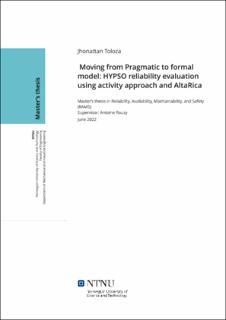| dc.description.abstract | Systems are becoming more complex over time, requiring interdisciplinary groups to develop them. Moreover, systems are more interconnected, meaning that different systems should be designed to work together with others in a System on System environment. Therefore, more engineering groups are moving from paper-based to model-based system engineering approaches. Even though using models is not new in engineering, the MBSE concept became popular after 2007 when INCOSE introduced the MBSE initiative. From now on, the main limitation MBSE has had to overcome is the integration of different models that use different languages. Even though software suites nowadays offer a high level of integration, those solutions are out of the reach for several users in terms of cost. They do not offer the flexibility that uses different but well-known model languages.
This limitation is more remarkable for RAMS modeling. Even though the concept of MBSA has been used since 1990, integrating those techniques with a pragmatic approach like MBSE is not easy. The development of approaches focused on translating pragmatic models to a formal structure becomes relevant to making MBSE languages compatible with the formal ones used to get relevant RAMS calculations. Therefore, this work proposes the activity approach as an additional step in the system architecture development. The activity approach is thought to use logic and structure so that it could be used as the link between the two different model types.
This document uses the Cube Architecture framework as the first step of Model-Based System Engineer and introduces the activity concept in it. The case study is the HYPSO project, developed by the NTNU small Satellite lab. Satellites have to deal with unique conditions not seen on earth. Therefore, it is required prior to the development of the activity approach to analyze the hazard and the respective hazardous events, as well as their consequences.
Activity approach logic is translated to a formal structure. Subsequently, AltaRica is used to model the activity approach in a formal language. | |
